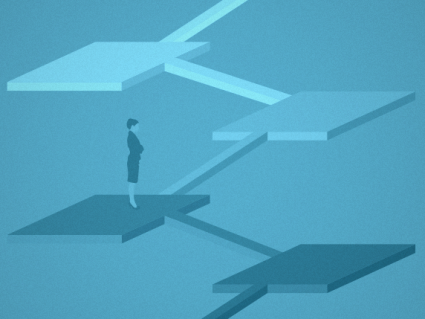
Embrace Discomfort
This is a longer blog about your growth as an individual. The insights within the article are not mine, but I found them relevant to conversations I have everyday with the people that surround me. Many people like to boast about new things they’re doing, trying, in the process of learning, committing to, etc. It’s funny, though, that you can usually make a pretty sound judgment about whether or not that person will actually follow through with what they’re telling you. I like to think that this process of learning, illustrated by David Foster Wallace, is a pretty accurate breakdown of why many people grow frusterated with learning something new, and then eventually drop it altogether. Guiltily, I have experienced this humbling journey. Understanding and embracing how you work is the first step in any endeavor, so I figure why not try to understand how we embrace at a base level.
As David Foster Wallace wrote in his novel “Infinite Jest,” the path to genuine mastery of your craft is “slow, frustrating. Humbling. A question of less talent than temperament.” That’s because the journey of improvement is not a linear progression where one success builds upon the next. Rather, “you proceed toward mastery through a series of plateaus, so there’s like radical improvement up to a certain plateau and then what looks like a stall.”
When you’re stalled on a plateau, you’re in a state of suspended animation for an indefinite period of time. Meanwhile it seems like everyone around you keeps climbing higher and higher, leaving you behind. How you handle those plateaus, psychologically, will determine whether you remain stalled there forever. It’s emotionally trying, and you’ll want to give up.
In several passages from the aforementioned Infinite Jest, a tennis coach cautions his pupils on three psychological traps that are essential to avoid in continuing to improve toward tennis mastery, moving from one plateau to the next..
Plateau 1: Stick With It
“You’ve got … your Despairing type, who’s fine as long as he’s in the quick-improvement stage before a plateau, but then he hits a plateau and sees himself seem to stall, not getting better as fast or even seeming to get a little worse, and this type gives in to frustration and despair, because he hasn’t got the humbleness and patience to hang in there and slog, and he can’t stand the time he has to put in on plateaux, and what happens?”
“Geronimo!” the other kids yell, not quite in sync.
— David Foster Wallace, Infinite Jest
This is often your first stop on your journey to mastery, and it can be a shock to the system. It’s when you begin to realize that you won’t be an exceptional, overnight success—and that mastery is a long way off. It’s when you realize that overnight successes actually take years and years.
Progress junkies seeking short-term gratification give up, and that’s why success turns more on character than it does on talent. University of Pennsylvania psychology professor Angela Duckworth argues in The Plateau Effect that “if you’re myopic and only look at the next moment in time and you base your decisions on ‘what am I going to get out of this in the next nanosecond?’ … then when you hit a plateau, your natural conclusion is to quit and move on to the next thing.” But “if you’re able to think about things in much bigger chunks, you can make good long-term choices and investments of your effort and time.”
Success turns more on character than it does on talent.
It’s “grit”, not aptitude or talent, that plays the biggest role in your success. Duckworth defines grit as “sticking with things over the very long term until you master them . . . . [T]he gritty individual approaches achievement as a marathon; his or her advantage is stamina.”
In a study of 1,200 West Point cadets before the beginning of basic training, Duckworth measured cadets based on her grittiness index and grittier candidates were 60 percent more likely to make it through training.
Be gritty, and stick with it.
Plateau 2: Practice Deliberately
“You’ve got your Obsessive type … so eager to plateau-hop he doesn’t even know the word patient, much less humble or slog, when he gets stalled at a plateau he tries to like will and force himself off it, by sheer force of work and drill and will and practice, drilling and obsessively honing and working more and more, as in frantically, and he overdoes it and gets hurt, and pretty soon he’s all chronically messed up with injuries, and he hobbles around on the court still obsessively overworking, until finally he’s hardly even able to walk or swing, and his ranking plummets.”
— David Foster Wallace, Infinite Jest
In 1885, German psychologist Hermann Ebbinghaus discovered what’s now known as the “spacing effect.” Ebbinghaus studied gibberish words and showed that his ability to learn and recall those words improved dramatically when he spaced his study session out over time. It’s intuitive to any student who has crammed for an exam and then immediately forgot everything. It’s the phenomenon that your ability to learn a concept improves when you study it multiple times, spaced over a long time span rather than within a short time frame.
On the other hand, the spacing effect seems counterintuitive because it feels like and is misinterpreted by outsiders as laziness. It feels more logical to push forward with hard work, even as we see diminishing, plateauing returns, because the alternative is inaction. The spacing effect demonstrates the role patience plays, in tandem with pushing, in the way our minds learn and improve.
The fact remains that to improve, we need rest and rejuvenation, a connection seen in not just the spacing effect but elsewhere, such as the strong link between sleep and productivity. The risk in impatience and the refusal to slog and pause is not only plateauing results, it’s also the increased exposure to injury and burnout as we push harder and harder, from which it may take a long time to recover.
Don’t push too hard, no matter how tempting it might be.
Plateau 3: Embrace Discomfort
“Then [there’s] maybe the worst type, because it can cunningly masquerade as patience and humble frustration. You’ve got the Complacent type, who improves radically until he hits a plateau, and is content with the radical improvement he’s made to get to the plateau, and doesn’t mind staying at the plateau because it’s comfortable and familiar, and he doesn’t worry about getting off it, and pretty soon you find he’s designed a whole game around compensating for the weaknesses and chinks in the armor the given plateau represents in his game, still—his whole game is based on this plateau now.
And little by little, guys he used to beat start beating him, locating the chinks of the plateau, and his rank starts to slide, but he’ll say he doesn’t care, he says he’s in it for the love of the game, and he always smiles but there gets to be something sort of tight and hangdog about his smile, and he always smiles and is real nice to everybody and real good to have around but he keeps staying where he is while other guys hop plateaux, and he gets beat more and more, but he’s content.”
— David Foster Wallace, Infinite Jest
It starts with acclimation. First you hate the plateau, then you get used to the plateau, and finally, you need the plateau.
The plateau doesn’t feel like a plateau any longer—something foreign and uncomfortable. Instead that flat line becomes the new normal. This happens more easily than you might expect because of the way our brain adapts to stimulus.
If you’ve experienced walking into a subway in the summer, you’ve noticed how a musky, stinky odor will hit your nose quite strongly at first but within a few minutes you’ll hardly notice it. This happens through a process called olfactory fatigue, which is a kind of neural adaptation. Your sensory neurons respond immediately when exposed to new stimuli but that responsiveness decreases with continual exposure to the stimuli at a constant intensity—your mind and body actually go numb.
To get things going again, you need exposure to new stimuli, but there’s where the rub is. Trying something new may not only fail to make you better, it might actually make you worse. In fact, you’re likely to get worse before you get better.
The problem is that getting better means putting at risk what you’ve already gained, and that butts up against a powerful human bias of preferring to avoid losses over acquiring gains, called “loss aversion.” It’s an extremely potent bias, too. In a study offering a gamble on a 50/50 coin toss where an individual might lose $20, those people demanded at least a $40 payoff if they won, suggesting people irrationally require gains of twice the amount that they could potentially lose.
The perniciousness of loss aversion is that, to outside observers, it looks like you’re doing it the right way—plugging away steadily and diligently—when in reality, your decision-making is driven by a deep-seated fear of losing what you have. As Jeff Bezos, CEO of Amazon, put it, to break through the status quo with a pioneering innovation, you must reject that external validation and have “a willingness to be misunderstood for long periods of time.” That means pursuing mastery for itself, not for outside approval or self-preservation.
Try new things, and be willing to get worse.
Success contains all manner of planes and gradients. It’s easy to see how getting to the peak of a mountain requires you to scale its steepest inclines. What’s not as obvious, but just as integral, is that you must make the journey across the stretching plateaus as well—with grit, respite, and exploration.
-Insights by Walter Chen (voted one of 50 best blogs by Time Magazine)
How about you?
How have you persevered and made the slow, frustrating climb to mastery?

